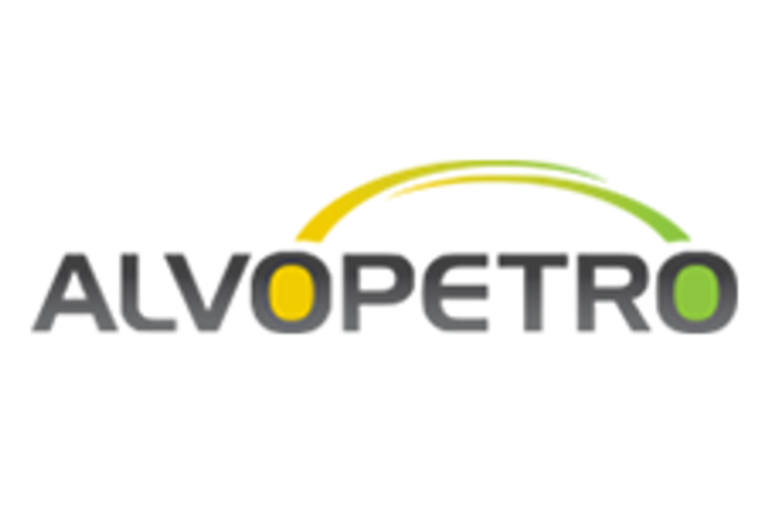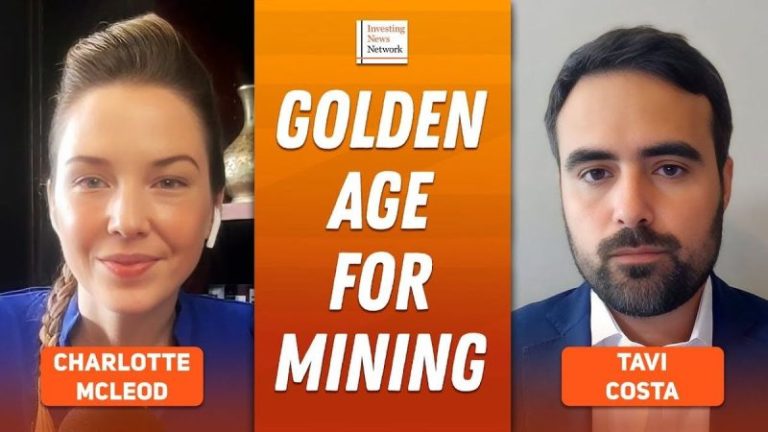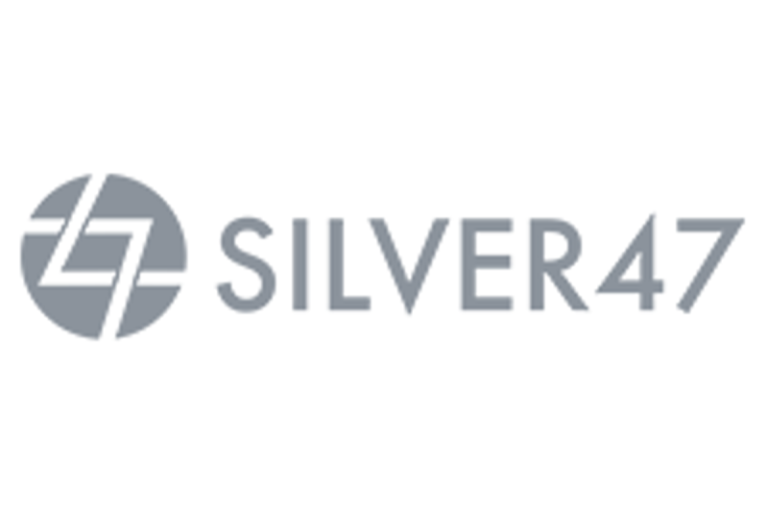Bitcoin is prone to price volatility, with wide swings to the upside and downside, making it difficult for investors to know when the right time to buy the top crypto is.
There has been renewed interest in cryptocurrencies following the election of US President Donald Trump, leading the Bitcoin price to soar to new heights in 2025, as investors and other industry insiders speculate on how the Trump administration’s policies could further grow the sector and encourage mainstream adoption.
Trump ran on a platform that promised to make the US the Bitcoin capital of the world, vowing to establish a national reserve for the asset, and several states have already introduced legislation to create similar reserves within their borders.
The price of Bitcoin pulled back to under US$100,000 in February 2025 and fell as low as US$75,000 by April 9, marking a strong buying opportunity for crypto investors. Bitcoin rebounded in May, breaking past the US$100,000 level and surging further over the summer to hit fresh all-time highs in July and August of more than US$120,000 per BTC.
Meanwhile, institutions and businesses like Michael Saylor’s Strategy have continued to buy Bitcoin by the millions, and spot Bitcoin exchange-traded funds (ETFs) remain popular.
This surge of interest paints a bullish picture of Bitcoin’s continued growth. However, buying Bitcoin isn’t a simple decision. Read on to learn the basics of Bitcoin fundamentals, price forecasts and methods for determining if now’s the right time to buy Bitcoin, including several popular technical trading indicators you should know.
What gives Bitcoin its value? 5 factors to know
Before you decide if Bitcoin is a good investment for you, you need to understand Bitcoin and the wider crypto market.
Bitcoin was the world’s first cryptocurrency, created in January 2009 by the mysterious Satoshi Nakamoto.
Conceived as a virtual alternative to fiat currency, Bitcoin is built atop blockchain technology, which it uses for both validation and security. Blockchain itself is a distributed digital ledger of transactions, operating through a combination of private keys, public keys and network consensus.
The best analogy to explain how this works in practice involves Google Docs. Imagine a document that’s shared with a group of collaborators. Everyone has access to the same document, and each collaborator can see the edits other collaborators have made. If anyone makes an edit that the other collaborators don’t approve of, they can roll it back.
Going back to Bitcoin, the virtual currency primarily validates transactions through proof of work. Also known as Bitcoin mining, this competitive and incredibly resource-intensive process is the means by which new Bitcoins are generated.
How it works is deceptively simple. Each Bitcoin transaction adds a new ‘block’ to the ledger, identified by a 64-digit encrypted hexadecimal number known as a hash. Each block uses the block immediately preceding it to generate its hash, creating a ledger that theoretically cannot be tampered with. Bitcoin miners collectively attempt to guess the encrypted hex code for each new block — whoever correctly identifies the hash then validates the transaction and receives a small amount of Bitcoins as a reward.
From an investment perspective, Bitcoin toes the line between being a medium of exchange and a speculative digital asset. It also lacks any central governing body to regulate its distribution. As one might expect, these factors together make Bitcoin quite volatile, and therefore somewhat risky as an investment target.
As for the source of this volatility, Bitcoin’s value is primarily influenced by five factors.
1. Supply and demand
It’s widely known that no more than 21 million Bitcoins can be produced, and that’s unlikely to happen before 2140.
Only a certain number of Bitcoins are released each year, and this rate is reduced every four years by halving the reward for Bitcoin mining. The last of these ‘halvings’ occurred in April 2024 and the next one is due sometime in 2028. When it happens, there may be a significant increase in Bitcoin demand, largely driven by media coverage and investor interest.
Bitcoin demand is also strengthening in countries experiencing currency devaluation and high inflation.
It would be remiss not to mention that Bitcoin represents an ideal mechanism for supporting illicit activities — meaning that increasing cybercrime could itself be a demand driver.
2. Production costs
It’s said that Bitcoin benefits from minimal production costs. This isn’t exactly true, however. Solving even a single hash requires immense processing power, and it’s believed that crypto mining collectively uses more electricity than some small countries. It’s also believed that miners were largely responsible for the chip shortage experienced throughout the pandemic due to buying and burning out vast quantities of graphics cards.
These costs together have only a minimal influence on Bitcoin’s overall value. The complexity of Bitcoin’s hashing algorithms and the fact that they can vary wildly in complexity are far more impactful.
3. Competition
Bitcoin’s cryptocurrency market share has sharply declined over the years. In 2017, it maintained a market share of over 80 percent. Bitcoin’s current market share is just under 60 percent.
Despite that fall, Bitcoin remains the dominant force in the cryptocurrency market and is the marker by which many other cryptocurrencies determine their value. However, there is no guarantee that this will always remain the case. There are now scores of Bitcoin alternatives, known collectively as altcoins, which you can learn more about here.
The most significant alternative to Bitcoin is Ethereum. Currently accounting for roughly 10 percent of the crypto market, Ethereum has long maintained its position as the second largest cryptocurrency. Some experts have suggested that Ethereum may even overtake Bitcoin, but others don’t see that as a possibility in the near future.
4. Regulations
Bitcoin may itself be unregulated, but it is not immune to the effects of government legislation. For instance, China’s 2021 ban of the cryptocurrency caused a sharp price drop, though it quickly rallied in the following months. The European Union has also attempted to ban Bitcoin in the past, and Nic Carter, a partner at Castle Venture, accused the US of trying to do the same in February 2023.
There has been plenty of discussion surrounding the role of the US Securities and Exchange Commission (SEC) in regulating Bitcoin and other crypto as investment assets. The US made progress in establishing crypto legislation in 2024 when the House passed the Financial Innovation and Technology for the 21st Century (FIT21) Act in a bipartisan 279 to 136 vote on May 22 of last year.
While that act has yet to make further progress, the new Trump administration has already loosened some crypto regulation with regards to crypto reporting for banks and decentralized finance businesses.
In April 2025, the SEC approved rule changes allowing Ether ETF options, and also updated its guidance on crypto company disclosures.
Around the same time, President Trump signed a resolution repealing the Internal Revenue Services’ (IRS) controversial DeFi broker rule. Enacted at the end of the Biden Administration, the rule expanded the definition of “broker” to include decentralized finance, or DeFi, platforms. The reversal passed both chambers of Congress with bipartisan support.
In July, Trump signed the GENIUS Act into law, which establishes a regulatory framework for payment in stablecoins. Secretary of the Treasury Scott Bessent has stated that the law paves the way for a potential stablecoin market worth US$3.7 trillion by 2030.
5. Public interest and media coverage
As with any speculative commodity, Bitcoin is greatly influenced by the court of public opinion.
Perhaps the best example of this occurred in 2021. At that time, a tweet from Tesla’s (NASDAQ:TSLA) Elon Musk caused Bitcoin’s price to drop by 30 percent in a single day. This also wiped about US$365 billion off the cryptocurrency market.
Another example occurred on January 9, 2024, leading up to the deadline for eight spot Bitcoin ETFs by the US Securities and Exchange Commission (SEC). In a since-deleted post on X, formerly known as Twitter, a hacker falsely stated that the SEC had approved all eight pending Bitcoin ETFs. This caused the price of Bitcoin to spike to US$48,000, but it quickly dropped back down to around US$46,000 after the SEC confirmed it was a hack, leading some analysts to consider it a ‘sell-the-news’ event.
Is now a good time to buy Bitcoin?
The current US administration is crypto friendly, and Bitcoin and altcoins are seeing support in 2025. Could they go even higher, or should you wait for a dip to buy? Bitcoin is notoriously volatile, which can make it difficult to judge where the crypto is going next, but there are several strategies to help investors decide when to invest.
To determine if it is a good time to invest in Bitcoin, investors should pay attention to the market and listen to the experts, as generally speaking, Bitcoin’s price action is sentiment-driven. To keep on top of big news in the sector, follow our frequent Crypto Market Updates, which drop several times a week.
There are also different technical indicators that crypto traders use to help them decide if now is the time to buy or sell Bitcoin. We run through some popular indicators below.
For example, the Relative Strength Index (RSI) is a technical indicator used to gauge the momentum of a cryptocurrency’s price. It fluctuates on a scale from 0 to 100. By analyzing the magnitude of recent price changes relative to the previous 12-month period, the RSI helps traders identify whether a cryptocurrency is potentially overbought or oversold. An RSI above 70 often signals an overbought market, while an RSI below 30 suggests an oversold market.
Another metric to consider is the MVRV Z-score, calculated by subtracting the ‘realized’ value of Bitcoin, which is an average of the prices at which each Bitcoin was last moved, from the current market value. This is then divided by the standard deviation of the Bitcoin market cap.
This indicator helps identify when market value deviates strongly from realized value, which could show the market is at a turning point. A score above 7 likely indicates that Bitcoin is overvalued, meaning it could be due for a correction, while a score below 0 suggests that Bitcoin is undervalued, meaning it could be a good buying opportunity.
Finally, to gauge the overall market sentiment, investors can look at the Fear & Greed Index. This index provides a snapshot of how optimistic or fearful the market is about Bitcoin, with high readings potentially signaling overenthusiasm and a possible correction.
While it’s useful to learn these technical indicators to help you trade, it is important to remember that there’s no such thing as a guaranteed investment, especially when it comes to cryptocurrencies. On the one hand, there’s virtually no chance that Bitcoin will experience a crash to zero. On the other hand, we also cannot take for granted that its value will continue to climb.
What is Bitcoin’s long-term price outlook?
For those considering Bitcoin as a long-term investment, it’s worth considering experts’ thoughts on Bitcoin in the future.
During the run-up to the new highs posted in July 2025, Eugene Cheung, chief commercial officer of crypto platform OSL, told Cointelegraph that he thinks the digital asset could reach US$130,000 to US$150,000 by the end of the year.
Fundstrat’s Tom Lee, who predicted Bitcoin’s peak in 2024, is calling for the digital currency to reach US$250,000 before 2025 comes to a close.
Not everyone is so optimistic about Bitcoin’s prospects. Top Economist Henrik Zeberg has expressed concerns about Bitcoin’s future in the context of continued economic uncertainty, as its price remains highly linked with the performance of the tech-stock heavy NASDAQ.
Billionaire investor Warren Buffet, meanwhile, has not minced words regarding his opinion on Bitcoin and its future. According to Buffet, Bitcoin is an unproductive asset with no unique value. He also feels that it doesn’t count as a true currency — in fact, he called it “rat poison.” Moreover, he believes that the crypto market as a whole will end badly.
Who holds the most Bitcoin?
Regardless of whether you believe Bitcoin’s proponents or naysayers, it’s clear that it has some incredibly prominent backers in both the investment world and the wider business landscape.
Business analytics platform Strategy (NASDAQ:MSTR) is by far the largest public company in the Bitcoin space, with 628,946 Bitcoin to its name as of August 11, 2025. The next three public companies with the largest Bitcoin holdings are Marathon Digital Holdings (NASDAQ:MARA) with 50,639 Bitcoin, soon-to-list Twenty One Capital (NASDAQ:XXI) with 37,229.7 Bitcoin and Bullish (NYSE:BLSH) with 24,340 Bitcoin.
The US, China and the United Kingdom hold the top three spots for countries with the most Bitcoin holdings, with 198,012, 194,000 and 61,245 Bitcoin respectively at that time.
There are also plenty of individuals with large holdings, the most significant of which is believed to be Bitcoin’s creator, Satoshi Nakamoto. Other prominent names include Michael Saylor, Cameron and Tyler Winklevoss, and Tim Draper.
How to smartly invest in Bitcoin?
To help increase the odds of crypto being a good investment, investors in the Bitcoin market should learn the basics of safely investing in Bitcoin.
How to buy Bitcoin
The good news is that investing in Bitcoin is actually quite simple. If you’re purchasing through a stockbroker, it’s a similar process to buying shares of a company. Otherwise, you may need to gather your personal information and bank account details. It’s recommended to secure your network with a VPN prior to performing any Bitcoin transactions.
The first step in purchasing Bitcoin is to join an exchange. Coinbase Global (NASDAQ:COIN) is one of the most popular, but there’s also Kraken and Bybit. If you’re an advanced trader outside the US, you might consider Bitfinex.
Once you’ve chosen an exchange, you’ll need a crypto wallet. Many first-time investors choose a software-based or ‘hot’ wallet either maintained by their chosen crypto exchange or operated by a service provider. While simpler to set up and more convenient overall, hot wallets tend to be less secure as they can be compromised by data breaches.
Another option is a ‘cold’ wallet — a specialized piece of hardware specifically designed to store cryptocurrency. It’s basically a purpose-built flash drive. If you plan to invest large amounts in crypto, a cold wallet is the better option.
Once you’ve acquired and configured your wallet, you may choose to connect either the wallet or your crypto exchange account to your bank account. This is not strictly necessary, and some seasoned investors don’t bother to do this.
Finally, with your wallet fully configured and your exchange account set up, it’s time to place your order.
Best practices for investing in Bitcoin
The most important thing to remember about Bitcoin is that it is a high-risk asset. Treat Bitcoin as a means of slowly growing your existing wealth rather than an all-or-nothing gamble, and never invest money that you aren’t willing to lose.
As with other investments, it’s important to hedge your portfolio. Alongside Bitcoin, you may want to consider investing in other cryptocurrencies like Ethereum, or perhaps an altcoin. You may also want to explore other blockchain-based investments, given that even the most stable cryptocurrencies tend to be fairly volatile.
It’s also key to ignore the hype surrounding cryptocurrencies. Recall how many people whipped themselves into a frenzy over non-fungible tokens in 2022. The majority of NFTs created during that time are now worthless.
Make decisions based on your own market research and advice from trusted — and more importantly, certified — professionals. If you’re putting up investment capital based on an influencer’s tweets, you are playing with fire.
You should also start small. A good rule of thumb is not to dedicate more than 10 percent of your overall capital to cryptocurrency. Even that number could be high — again, it’s all about moderation.
Make sure to prioritize cybersecurity as well. Cryptocurrencies are an immensely popular target for cybercriminals. In addition to maintaining a cold wallet, make sure you practice proper security hygiene. That means using a VPN and a password manager while also exercising mindfulness in how you browse the web and what you download.
Finally, make an effort to understand what cryptocurrencies are and how they work. One of the reasons Sam Bankman-Fried was able to run FTX as long as he did was because many of his investors didn’t fully understand what they were putting their money into. Don’t let yourself be fooled by buzzwords or lofty promises about Web3 and the metaverse.
Do your research into the technology behind it all. That way, you’ll be far better equipped to recognize when something is a sound investment versus a bottomless money pit.
Indirect crypto investing
Given Bitcoin’s volatility, it’s understandable that you might be leery of making a direct investment. The good news is that you don’t have to. You can indirectly invest into the crypto space through mutual funds, stocks and ETFs.
ETFs are a popular and flexible portfolio choice that allows investors to benefit from a sector’s performance without the need to directly own individual stocks or assets. They are an especially appealing option in the cryptocurrency market as the technical aspects of purchasing and holding these coins can be confusing and intimidating for the less technologically inclined.
Bitcoin futures ETFs provide exposure to the cryptocurrency’s price moves using Bitcoin futures contracts, which stipulate that two parties will exchange a specific amount of Bitcoins for a particular price on a predetermined date.
Conversely, spot Bitcoin ETFs aim to track the price of Bitcoin, and they do so by holding the asset. Spot Bitcoin ETFs have been offered to Canadians since 2021, and there are now 13 Canadian cryptocurrency ETFs you can buy. Spot Bitcoin ETFs began trading in the US on January 11, 2024. For investors interested in blockchain technology, there are also several blockchain ETFs.
Do a bit of research and touch base with your stockbroker or financial advisor before you go in this direction.
Investor takeaway
Bitcoin is a fascinating asset. Simultaneously a transactional tool and a speculative commodity, it’s attracted the attention of investors almost since it first hit the market. Unfortunately, it’s also incredibly volatile.
For that reason, while current market conditions are favorable for anyone considering buying Bitcoin, it is an asset you should purchase only at your own risk. Because while Bitcoin may have the potential for significant returns, you may also lose most of your investment. If that knowledge doesn’t bother you, then by all means, purchase away.
Otherwise, there are better — less volatile — options for your capital.
FAQs for buying Bitcoin
What does Cathie Wood say about Bitcoin?
ARK Invest CEO Cathie Wood is extremely bullish on Bitcoin, telling Bloomberg in February 2023 that her firm believes the cryptocurrency could reach a value of US$1 million by 2030. In July 2025, Wood hiked her 2030 bitcoin price prediction to US$3.8 billion.
Securities Disclosure: I, Meagen Seatter, hold no direct investment interest in any company mentioned in this article.
This post appeared first on investingnews.com










